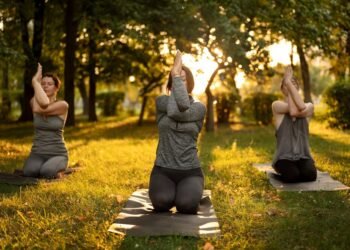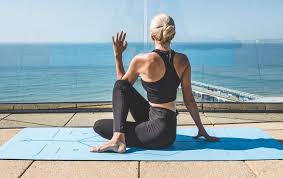People often ask me how to start their practice. The truth is, there are no set steps or rituals that will automatically launch you into a long-term practice. Instead, starting your practice starts with building a solid foundation. Yoga doesn’t require any special clothes or training. Yoga is accessible regardless of your financial situation, physical ability, or personal goals.
Once you have the basic fundamentals down, you can then explore other aspects of the practice that are more meaningful to you and your lifestyle. In this article, we will discuss some essential concepts that can help you get started on the right foot. Keep reading to learn more about what it means to build a strong foundation in your practice and understand the importance of establishing an everyday routine.

What is a foundation in yoga?
Yoga is a path of self-discovery that can be practiced by anyone. In order to experience the benefits of yoga, you must first learn the fundamentals. A solid foundation in yoga can help you experience a healthier and more balanced way of living.
Yoga is a combination of mental, physical, and spiritual practices that help you to relax and explore your own mind. Yoga can help you to develop a strong body that is able to support your daily activities. Yoga can also help you to feel spiritually connected with your higher self.
Why is a strong foundation important in yoga?
Yoga is a holistic practice that can benefit everyone, but it can also be extremely challenging. When you first start practicing, you may experience a range of emotions including feeling frustrated, nervous, anxious, or overwhelmed. This is completely normal. A strong foundation in yoga can help you to better navigate your own emotional experience while you’re practicing.
Many people report greater emotional clarity after only a few weeks of consistent practice. When you practice with a strong foundation, you can better understand what you’re feeling and why. This can help you to become more self-aware and more accepting of the ups and downs of the yogic path.
Strive for flexibility in your practice
One of the greatest benefits of yoga is the ability to alter your practice to suit your needs. When you begin practicing yoga, you may experience different levels of flexibility, both physically and mentally. You may experience pain or feel uncomfortable while attempting some poses, while others feel great! It’s completely normal to feel this way when you begin practicing yoga. A flexible practice allows you to adjust your practice to suit your needs and level of flexibility.
While you may have previously avoided certain poses because you were unable to achieve them, you can now modify them so that they are more comfortable for you. Are there certain classes that you’re avoiding, because you’re feeling uncomfortable in them? Is there a pose in one of your classes that you’d like to attempt but are avoiding due to your own insecurities? A flexible practice allows you to explore in a way that is more meaningful to you.

Practicing with breath helps build strength and flexibility
Practicing yoga with breathing is a powerful way to kick your practice into high gear. A common misconception is that yoga practice must be continuous. This is not true. In fact, many forms of yoga were developed to be practiced in short bursts rather than as a continuous flow. While it’s helpful to practice while you’re sitting in your chair, it’s even more beneficial to practice while you’re standing. Standing poses help to engage many more muscles than sitting poses do.
As you do standing poses, you’ll also improve your balance and increase your strength. Practicing with breathing also allows you to take your yoga practice from being a purely physical activity to a more mindful experience that incorporates your mental well-being. When you breathe while you’re practicing, you’re not just engaging your muscles. You’re also engaging your brain. When you breathe, you’re activating the part of your brain that controls relaxation. Practicing with breathing is also a great way to build flexibility.
Don’t skip the standing poses
As you build a stronger practice, you may feel the urge to move deeper into the poses. This is a great opportunity to increase your level of comfort in the pose by modifying the pose or adding props to make it more accessible. In many cases, you can make a pose more accessible by simply standing in the pose.
It doesn’t matter how you got into the pose or how you want to stay in the pose, standing poses are extremely beneficial. Standing poses not only help you to build strength and flexibility, but they’re also an excellent way to increase your sense of balance and increase your cardiovascular health. Yoga is a cardiovascular sport that can help you to burn calories, strengthen your muscles, and increase your heart rate.
Conclusion
Yoga is a wonderful practice that can help you to find peace within yourself. A strong foundation in yoga can help you to better navigate your own emotions while you’re practicing. When you practice with a strong foundation, you can better understand what you’re feeling and why. Strive for flexibility in your practice, practicing with breath helps build strength and flexibility, and don’t skip the standing poses, a strong foundation can increase your sense of balance and cardiovascular health.






